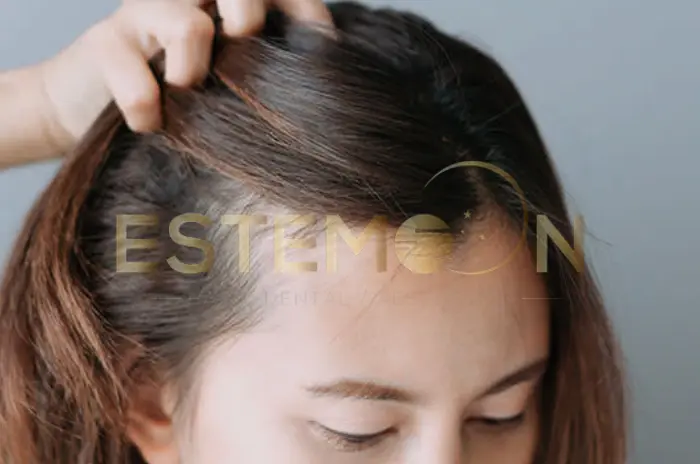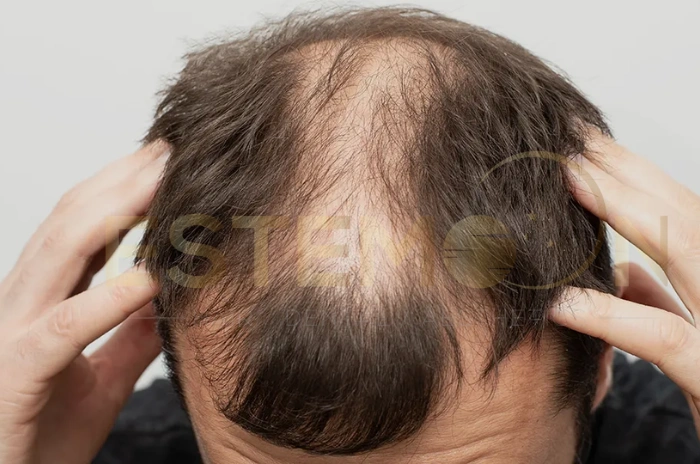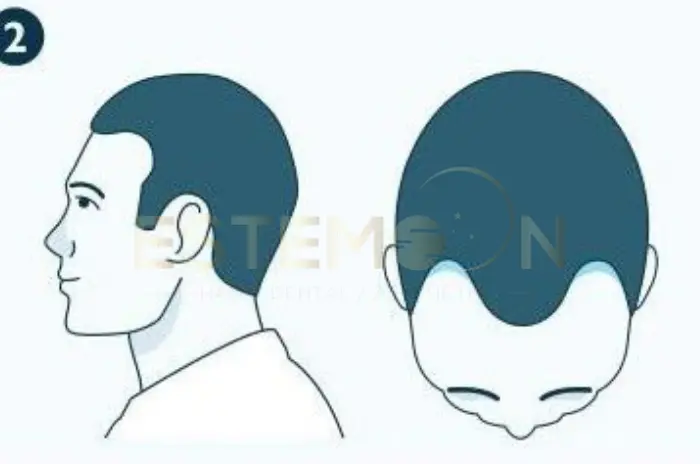Postpartum hair loss affects up to 90% of women after childbirth. While distressing, understanding its causes and implementing proper care strategies can help manage the process and promote healthy regrowth. This guide provides expert insights and practical solutions for new mothers.
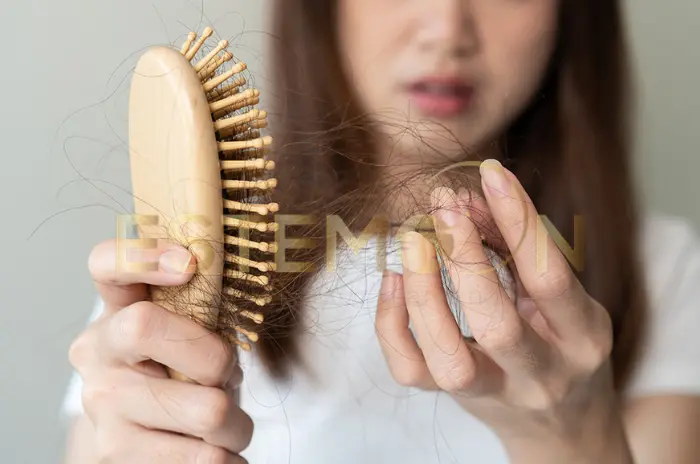
Understanding Postpartum Hair Loss and Its Causes
Postpartum hair loss, medically known as telogen effluvium, results from dramatic hormonal changes affecting the normal hair growth cycle.
Primary Causes:
Hormonal Fluctuations: During pregnancy, elevated estrogen keeps hair in the growth phase longer. After delivery, estrogen levels plummet, causing accumulated hair to shed simultaneously.
Stress Factors: Physical stress of childbirth, sleep deprivation, and emotional adjustments exacerbate hair loss through increased cortisol production.
Nutritional Depletion: Pregnancy and breastfeeding deplete nutrient stores, particularly iron, protein, and essential vitamins needed for healthy hair growth.
Thyroid Changes: Postpartum thyroiditis affects approximately 10% of new mothers, potentially contributing to hair loss.
Hair Loss Characteristics:
- Most noticeable around hairline and temples
- Diffuse thinning rather than patches
- Onset typically 2-4 months postpartum
- Peak shedding occurs between 4-6 months after delivery
| Factor | Impact | Duration |
|---|---|---|
| Hormonal changes | Primary trigger | 6-12 months |
| Physical stress | Accelerates shedding | 3-6 months |
| Nutritional deficiency | Prolongs recovery | Variable |
| Thyroid dysfunction | Compounds loss | 6-18 months |
Understanding these causes helps mothers recognize that postpartum hair loss is temporary. Consulting professionals at an intermediary organization can provide personalized recommendations.
Postpartum Hair Care Routine for Healthy Regrowth
Establishing a gentle hair care routine supports hair health during the postpartum period and promotes optimal regrowth.
Essential Components:
Gentle Cleansing: Use sulfate-free shampoos 2-3 times per week to prevent stripping natural oils from fragile strands.
Deep Conditioning: Apply weekly moisturizing treatments to strengthen hair and improve elasticity. Focus on mid-lengths and ends.
Scalp Massage: Gentle circular massages stimulate blood circulation to follicles. Perform for 5-10 minutes during washing.
Heat Protection: Minimize heat styling tools and use thermal protectants when necessary. Air drying is preferable.
Styling Considerations:
- Choose low-manipulation styles requiring minimal brushing
- Use wide-tooth combs on wet hair only
- Select lightweight products with biotin, keratin, and natural oils
- Avoid tight pulling or metal brushes
Consistency in gentle routines supports the delicate regrowth process while maintaining overall hair health.
The Role of Nutrition and Postpartum Vitamins
Proper nutrition plays a crucial role in supporting hair regrowth during the postpartum period. Strategic supplementation addresses nutrient deficiencies contributing to prolonged hair loss.
Key Nutrients:
Iron: Essential for oxygen transport to follicles. Postpartum women often have depleted stores due to blood loss and breastfeeding.
Protein: Hair is primarily keratin. Adequate protein intake supports strong, healthy hair formation.
Biotin and B-Vitamins: Support follicle function and keratin production. B12 and folate are particularly important.
Vitamin D: Regulates hair follicle cycling and growth phase transitions.
Omega-3 Fatty Acids: Support scalp health and provide anti-inflammatory benefits.
Nutritional Sources:
- Iron: Lean meats, spinach, lentils
- Protein: Fish, eggs, beans, quinoa
- Biotin: Eggs, avocados, salmon
- Vitamin D: Fatty fish, fortified dairy
- Omega-3s: Salmon, walnuts, flaxseeds
| Nutrient | Daily Amount | Hair Benefit |
|---|---|---|
| Iron | 18-27mg | Improves oxygenation |
| Protein | 71g | Supports keratin |
| Biotin | 30-35mcg | Enhances strength |
| Vitamin D | 600-800 IU | Regulates cycles |
| Omega-3 | 200-300mg DHA | Reduces inflammation |
Many mothers benefit from continuing prenatal vitamins during breastfeeding. Always consult healthcare providers before starting new supplements.
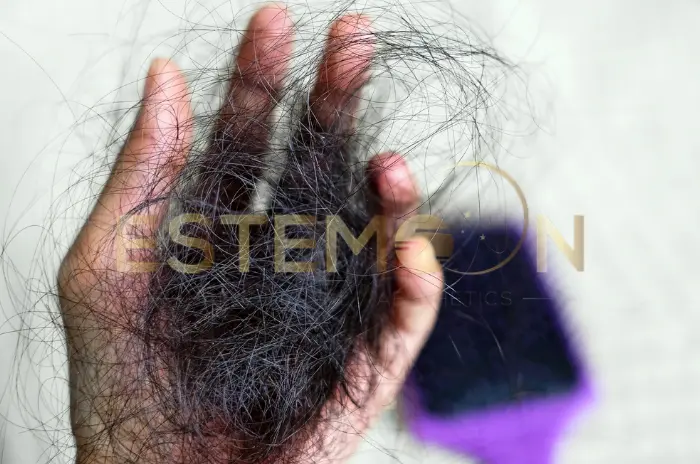
When Postpartum Hair Loss Starts and How Long It Lasts
Understanding the timeline helps new mothers prepare for and manage this temporary condition with realistic expectations.
Typical Timeline:
Onset (1-3 months): Hair loss begins as hormone levels stabilize. Some notice thinning as early as 6-8 weeks postpartum.
Peak Shedding (3-6 months): Most noticeable loss occurs when accumulated pregnancy hair sheds simultaneously.
Recovery (6-12 months): Hair growth gradually normalizes as hormones stabilize. Full recovery may take 12-18 months.
Complete Restoration (12-24 months): Most women see significant improvement by their child’s first birthday.
Factors Affecting Duration:
- Breastfeeding may prolong the period due to hormonal changes
- Multiple pregnancies can extend recovery time
- Nutritional deficiencies may delay regrowth
- High stress can prolong shedding
- Thyroid issues may extend timeline
Recovery varies significantly among women. Some experience shorter periods, while others take longer for full regrowth.
How Pregnancy Hormones Change Your Hair Cycle
Understanding hormonal effects on hair growth provides insight into why postpartum hair loss occurs and recovery expectations.
Normal Hair Cycle:
Anagen (Growth): Hair grows for 2-7 years, with 85-90% normally in this phase.
Catagen (Transition): Brief 2-3 week period where growth stops.
Telogen (Rest): Hair rests 2-4 months before shedding, with 10-15% normally in this phase.
Pregnancy Changes:
Estrogen Effects: High levels prolong the anagen phase, keeping more hair in growth and reducing daily shedding from 50-100 hairs to 30-40 hairs.
Progesterone Influence: Supports hair thickness and improves texture, contributing to fuller appearance during pregnancy.
Postpartum Shifts:
After delivery, rapid hormonal changes trigger synchronized shift of pregnancy-retained hair into telogen phase. This causes simultaneous shedding of 6-9 months’ worth of accumulated hair.
As hormones return to pre-pregnancy levels, the hair cycle normalizes, and new growth replaces shed hair. This process takes time as follicles complete their rest phase.
Simple Hair Care Tips for New Moms
Managing hair care as a new mother requires practical, time-efficient strategies accommodating newborn care demands while supporting hair health.
Quick Daily Care:
Morning Routine: Gentle brushing, dry shampoo if needed, and simple protective styling maintain appearance with minimal time.
Nighttime Protection: Use silk pillowcases and loose scrunchies to prevent friction damage while sleeping.
Strategic Washing: Plan wash days when help is available for baby care.
Time-Saving Strategies:
- Dry shampoo extends time between washes
- Leave-in treatments provide ongoing nourishment
- Protective hairstyles minimize daily styling needs
- Multi-purpose products save time
Stress Management:
Accept that hair appearance may differ during recovery. Focus on health rather than perfection and ask for help when needed.
Emergency Styling:
- Headbands and scarves camouflage thinning areas
- Volumizing products create fuller appearance
- Strategic partings minimize visible thinning
Simple routines reduce stress and support both hair health and overall well-being during early motherhood.
What to Expect from Postpartum Hair Regrowth
Setting realistic expectations helps new mothers navigate recovery with confidence and reduces anxiety about temporary changes.
Regrowth Characteristics:
Initial Appearance: New growth appears as short, fine “baby hairs” around the hairline with potentially different texture.
Texture Changes: Regrown hair may be curlier, straighter, or thicker than pre-pregnancy hair. Changes may be temporary or permanent.
Growth Rate: New hair grows approximately 0.5 inches per month, varying based on individual factors and nutrition.
Progressive Timeline:
Months 3-6: Initial regrowth becomes visible as fine hairs along hairline and temples.
Months 6-12: Regrowth gains length and blends with existing hair, though volume may appear reduced.
Months 12-18: Significant improvement in density as regrowth reaches substantial lengths.
Managing Expectations:
- Hair may not return to exactly pre-pregnancy state
- Multiple pregnancies may cause cumulative changes
- Individual genetics affect recovery patterns
Professional guidance from specialists at an intermediary organization can monitor progress and adjust care strategies throughout recovery.
Understanding that regrowth is gradual helps mothers maintain patience while implementing supportive care strategies.
FAQ
When does postpartum hair loss typically start?
Postpartum hair loss typically begins 1-3 months after delivery, with most women noticing increased shedding around 3-4 months postpartum. This timing corresponds to when pregnancy hormones decline enough to trigger synchronized shedding.
How long does postpartum hair loss last?
Most women experience active hair loss for 3-6 months, with peak shedding around 4-6 months postpartum. Complete recovery typically takes 12-18 months, though some may see improvement as early as 9 months.
Are there any treatments for postpartum hair loss?
While postpartum hair loss resolves naturally, supportive treatments include gentle hair care routines, scalp massage, proper nutrition, and appropriate supplementation. Severe cases may benefit from professional therapies.
What vitamins can help with postpartum hair loss?
Key vitamins include iron, biotin, vitamin D, and B-complex vitamins. Many women benefit from continuing prenatal vitamins during breastfeeding. Omega-3 fatty acids and adequate protein also support regrowth.
Follow us on social media for updates, tips, and patient success stories:

